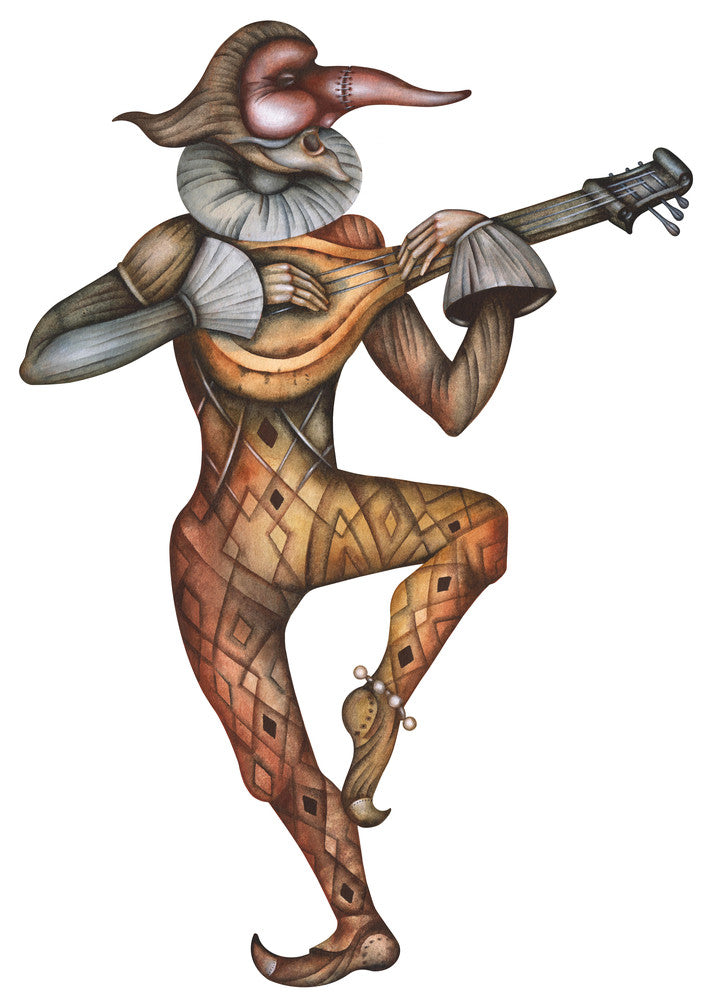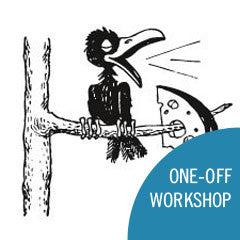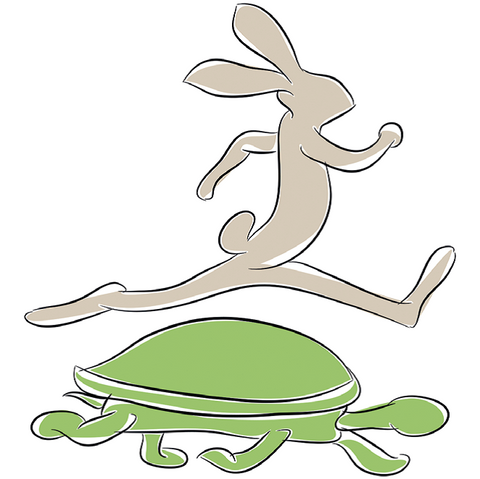
Commedia dell'arte
£14.95
The commedia dell’arte is an Italian theatre form that reached its height of popularity in the 16th and 17th centuries. Meaning ‘the comedy or play of the artists’ – with the artists in question being actors as opposed to writers or directors – the full name of this theatre form is the ‘commedia dell’arte all’improvviso’.
Scenarios
Actors in the commedia dell’arte would improvise a play around an agreed and much-repeated scenario that was very detailed. A company would have rehearsed and performed the play so often that the improvisation would become a fixed feature of the repertoire. The commedia dell’arte, whose modern equivalent would be fringe theatre, wasn’t the only theatre form in Italy at the time; there were also scripted plays called commedia erudita, which were performed in conventional theatres. Commedia dell’arte troupes carried their portable theatres with them and performed in streets and squares all over Italy and Europe. More famous commedia dell’arte troupes also performed in conventional theatres.
Plots
Plots focused on the theme of love. It is likely that Shakespeare would have seen a commedia dell’arte troupe; the beginning of A Midsummer Night’s Dream features a typical commedia dell’arte scenario. Yet, while both theatre forms were popular at the same time, Shakespeare’s emphasis on the quality of language contrasts with the commedia dell’arte’s relative neglect of words in place of an emphasis on plot and the skills of the actor.
Characters
All commedia dell’arte plays used the same stock characters, who would wear recognisable costumes and often half-masks. Unlike a Shakespearean or modern actor, a commedia dell’arte actor did not play a number of different characters but specialised in a single one. It is possible to divide these characters into three types:
- The older men, such as Pantalone, a miser who often has a beautiful daughter, Il Dottore, a pompous academic and Il Capitano, a loud-mouth and bragging soldier
- The lovers, with names such as Silvio, Ortensio and Florindo for the male characters and Isabella, Flaminia, and Silvia for the female ones
- The zanni or the clowns and servants, with names such as Arlecchino, Pulcinella and Scapino. A female zanni, often called Columbina, who was a servant to one of the female lovers, would provide a separate love interest for one of the male zanni. The zanni also entertained the audience with pre-rehearsed comic routines called lazzi. These were dropped into the play and often had little to do with the plot. Rather like the slapstick kitchen scene in a pantomime, their task was simply to make the audience laugh
Aims
This scheme of work does not aim to provide detailed factual information about the costumes and masks of the commedia dell’arte. Instead, it aims to give a brief overview of the dramatic form and then get students to work in the same way as commedia dell’arte actors, involving them in lively physical comedy as they work towards dramatising a scenario.
Learning objectives
- To learn about and practise ‘crosstalk’ and the lazzo of ‘Behind the Back’
- To improvise and perform a simple commedia dell’arte scenario
Number of lessons: 2


